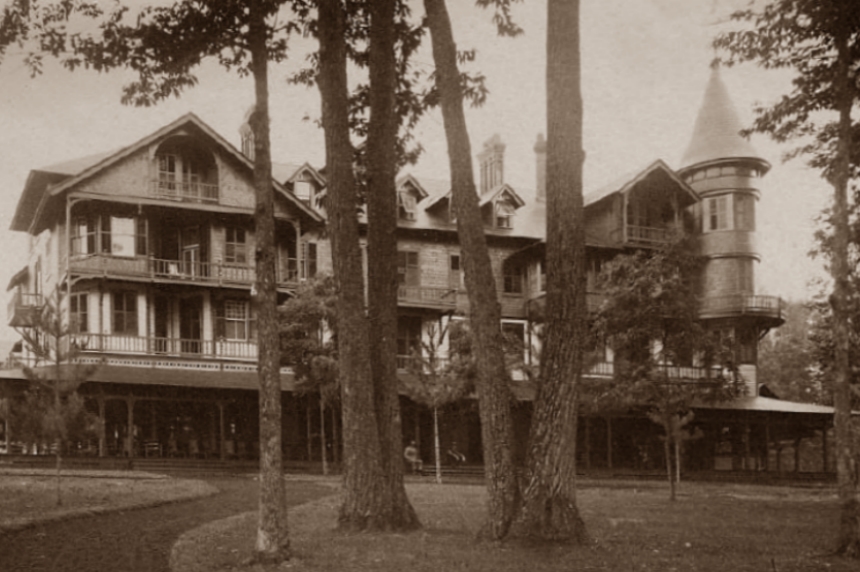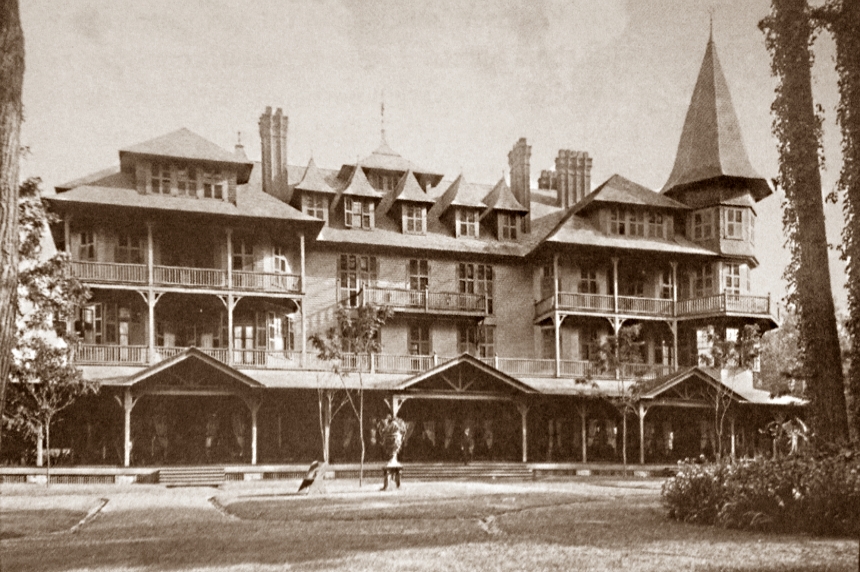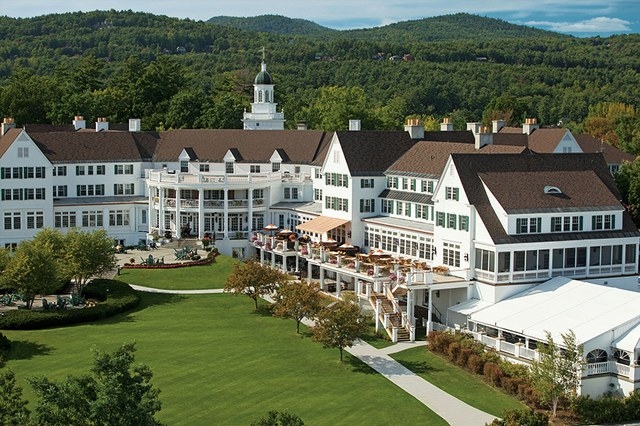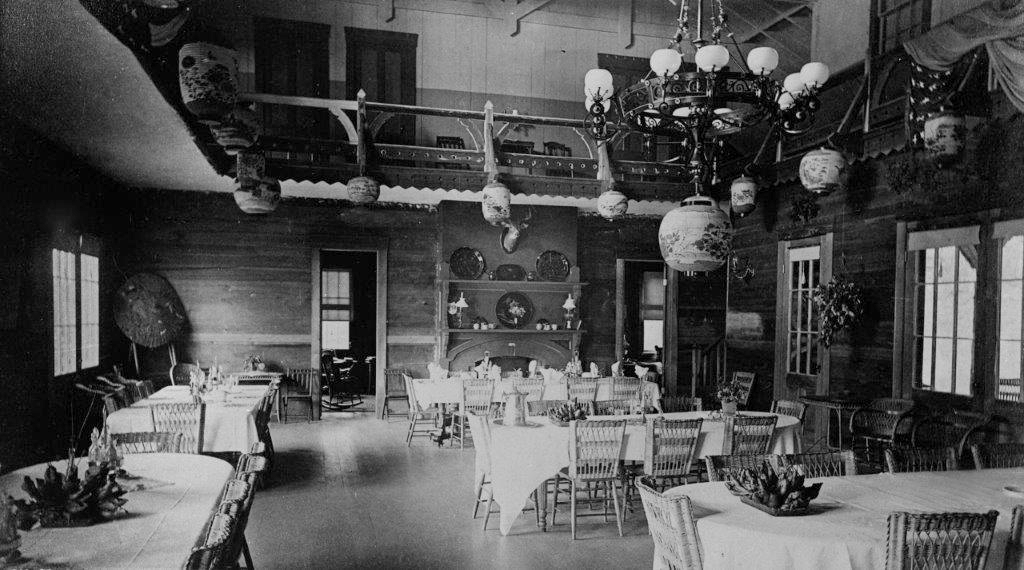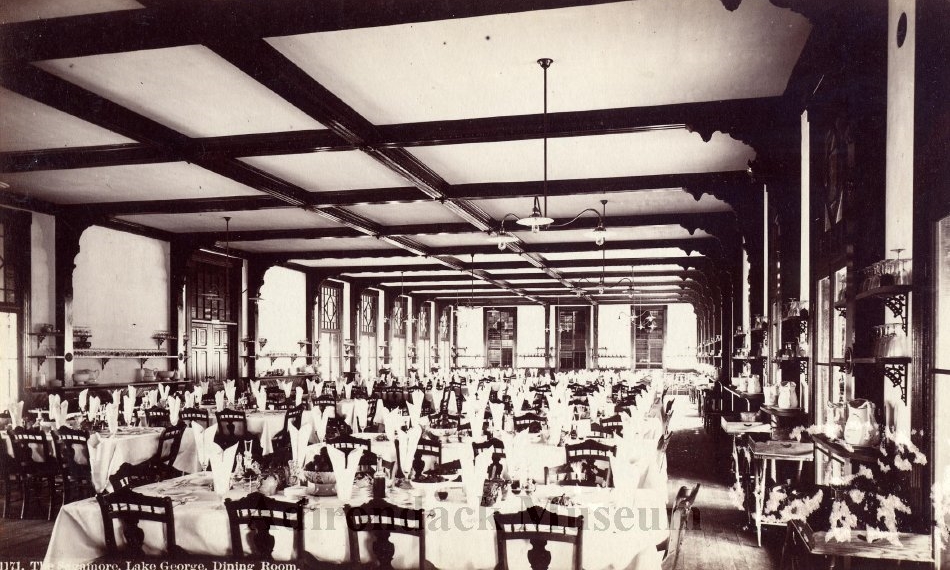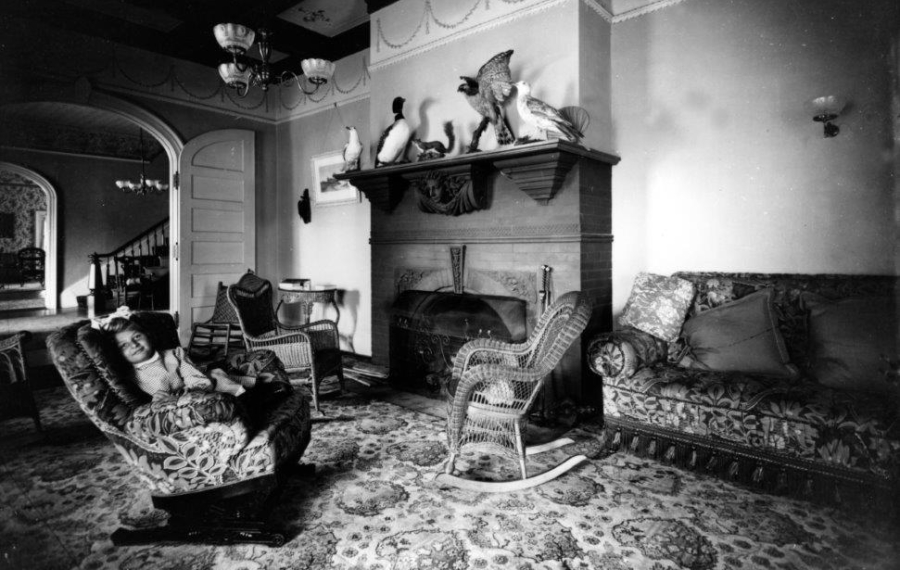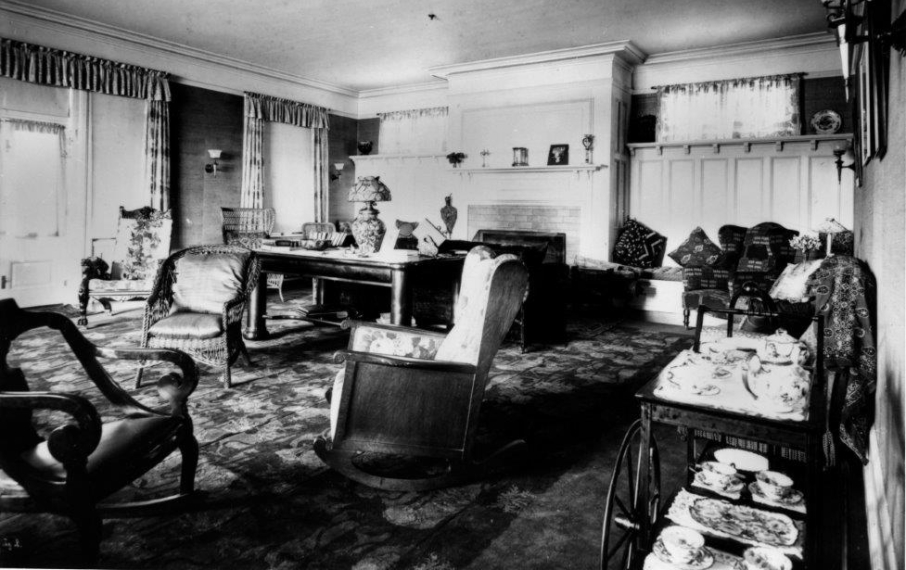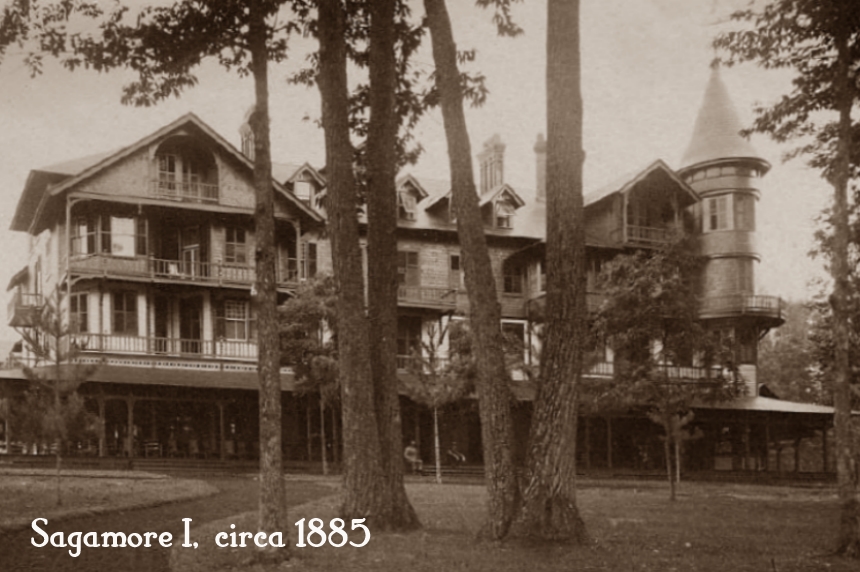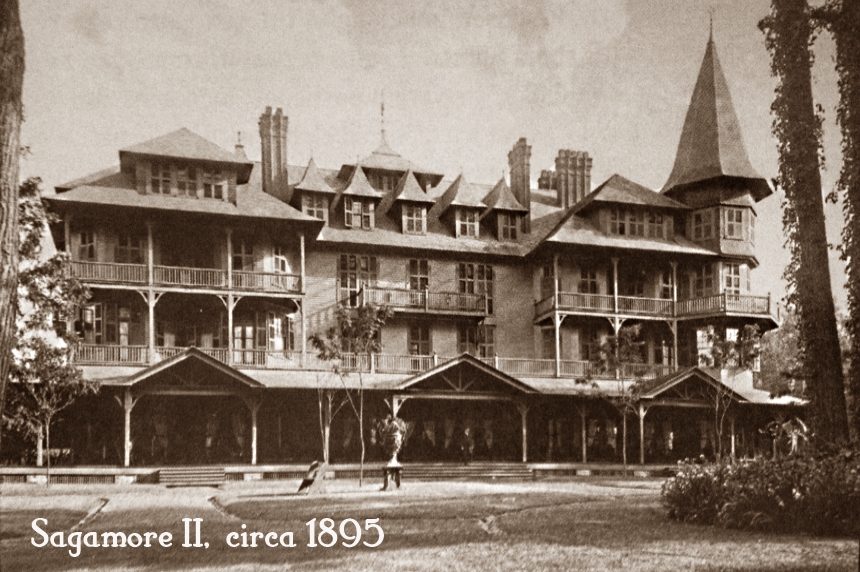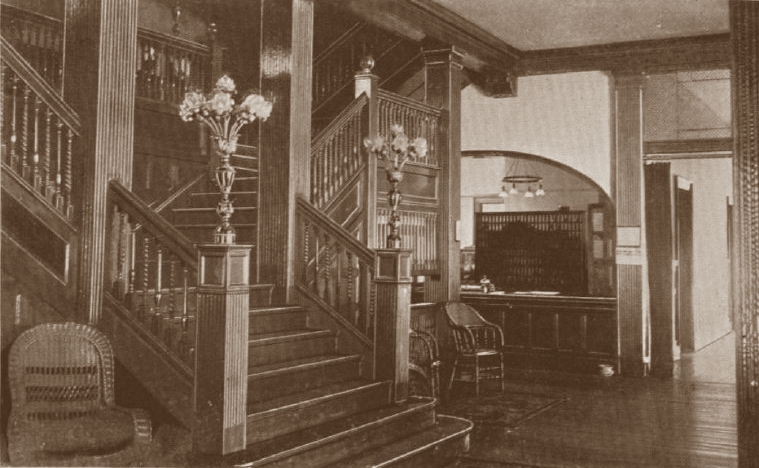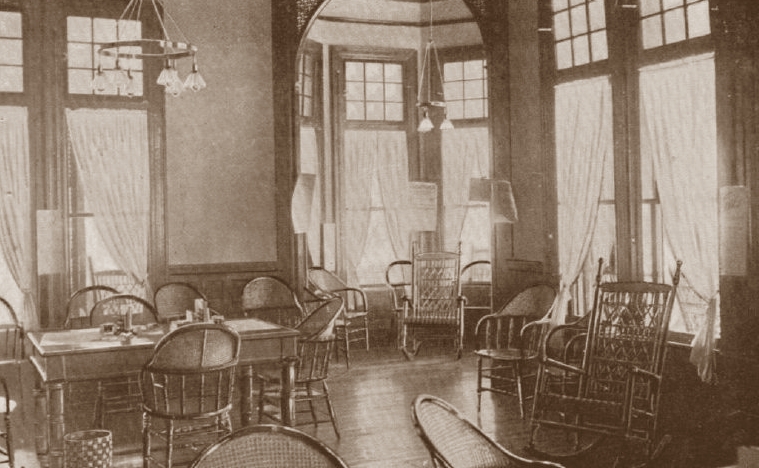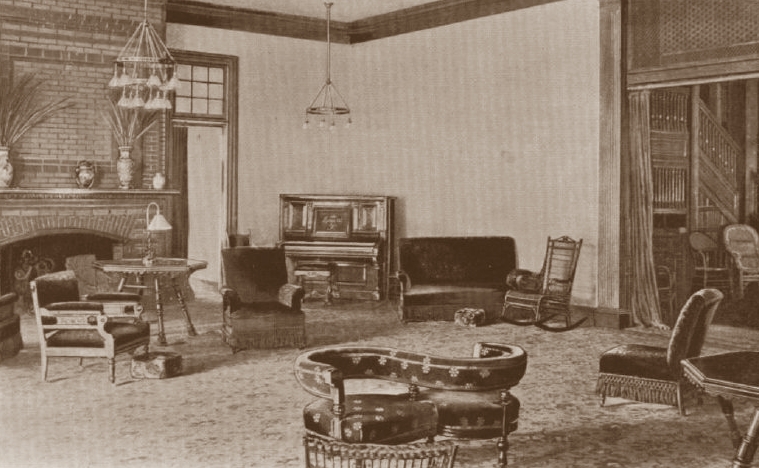Situated on its own island on the shores of pristine Lake George in the Adirondack Mountains of Eastern New York, The Sagamore Hotel has been welcoming guests from near and far for over 130 years. But what many of those guests may not know, is that the luxurious historic hotel that sits on the property today is actually The Sagamore’s third incarnation…
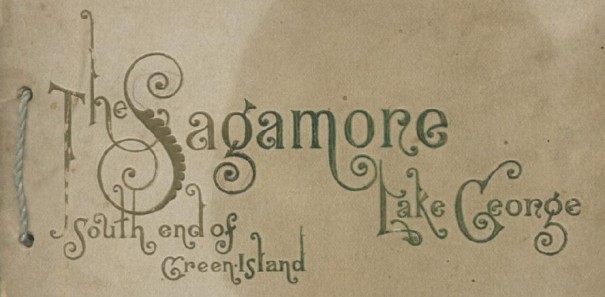
The Adirondack Mountains, and specifically Lake George and its immediate surroundings, had been inhabited by Native Americans for centuries prior to the arrival of the first Europeans in the mid-16oos. And in the years that followed, the region played host to many important battles both before and during the American Revolution, including the taking of Fort William Henry in 1757, which was depicted in James Fenimore Cooper’s book The Last of the Mohicans, as well as the capture of Fort Ticonderoga in 1775, which would provide the cannons and artillery later used by the Continental Army to battle the British at the Siege of Boston.
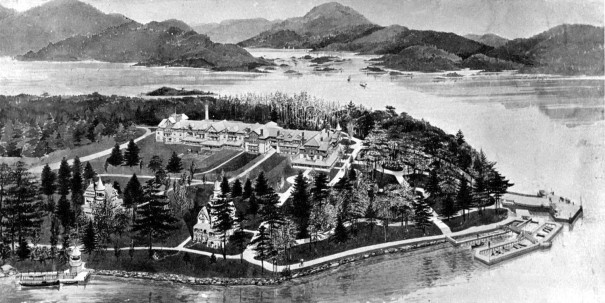
Artist rendering of the original Sagamore Hotel on Green Island, circa 1883
In the 100 years that followed the American Revolution, Lake George grew in popularity and became one of the preeminent destinations for the region’s wealthier families to spend their summers. By 1881, Myron O. Brown, long-time proprietor of the Mohican House in Bolton Landing on the lake’s western shore, had been noticing this trend for several years and approached a group of his regular summer guests about establishing a grand hotel on nearby Green Island (above) that could accommodate the lake’s growing number of summering visitors.
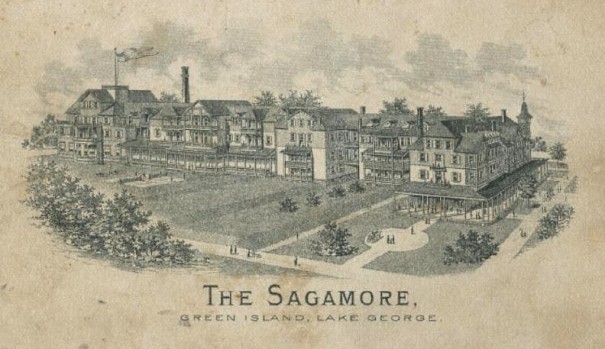
Advertising brochure, circa 1890, courtesy The Adirondack Museum
By the following year, Brown had recruited five investors and formed a group called the Green Island Improvement Company that was able to acquire the whole of Green Island for the lofty sum of $30,000, and construction began in the fall of 1882 on their new hotel. With three of the five investors hailing from Philadelphia, it came as no surprise that the Wilson Brothers, a prominent architectural firm also based in Philadelphia, were hired to design the hotel. It would be designed in the Queen Anne/Stick Style, a mode in which the Wilson Brothers firm were considered to be one of the best.
In choosing a name for this expansive and refined hotel, the investors felt it made sense to honor the history of the region and its Native American roots, naming it The Sagamore, meaning “respected chief” – a reference to the character Chingachgook from The Last of the Mohicans.
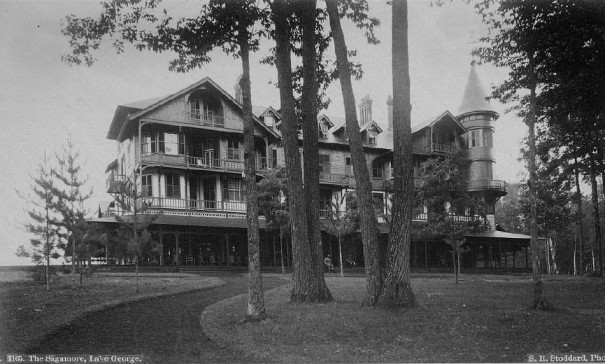
The Sagamore I, Photo by S. R. Stoddard, Courtesy The Adirondack Museum
As published in an early promotional pamphlet for the hotel, “The buildings comprising The Sagamore are of varying levels and picturesque in their grouping. The style is that popularly supposed to belong to the sixteenth century, rising one back of another, with short flights of steps between, connected by open corridors with charming outlooks; its varied porticoes, balconies, and gables, admirably displayed in colors that harmonize richly with their native surroundings.”
Interior Images, circa 1880s, courtesy The Sagamore Resort and Adirondack Museum
The pamphlet continues, “The interior finish is … rich and substantial, showing massive beams, fireplaces of artistic designs in terra cotta, tinted walls and joinery work in native woods. The furnishing is all that can be desired: chairs and sofas, multiform and inviting, of different woods, polished, and of willow-ware; the upholstery bright and cheerful; the beds of the best kind procurable; in short, no effort has been spared, nor cost considered, in making this the ideal hotel.”
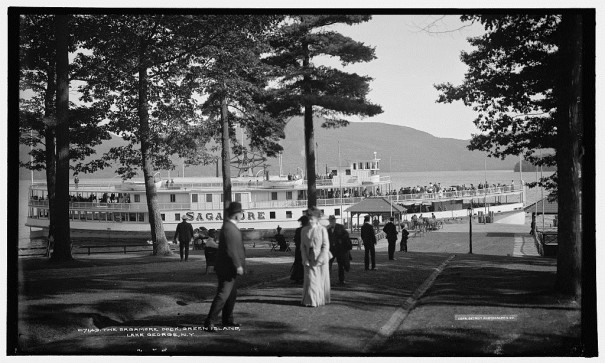
Passengers arriving at Green Island via the steamboat Sagamore, courtesy Library of Congress
Myron Brown, who was named the manager of the hotel, set the rates per room at $4.00 per day and up to $25.00 per week (depending on the season), and from its opening day on July 2, 1883, The Sagamore was a smashing success. Following that prosperous first season, the hotel would see its reputation grow as guests would return year after year – often spending months at a time, if not the whole summer – all while spreading the word to their friends back home about the wonderful and lavish experiences they would enjoy during their stay. And for the next ten years, Brown’s group of investors would see a handsome return on their investment that was more than they could have hoped, but sadly, it wouldn’t last forever…

Smoldering ruins of the Sagamore I, June 1893, courtesy The Sagamore Resort
In the early morning hours of June 27, 1893, with approximately 150 guests and employees asleep in their rooms, a fire broke out in the laundry building, adjacent to the main hotel structure, that spread too quickly to contain, and in a single night, the mighty Sagamore burned to the ground.
In a quote given to the Lake George Mirror for the article they published recounting the events of that fateful night, Myron Brown was quoted as saying, “I was awakened by the cry of fire given by the watchman as he ran through the building. The flames had already burst from the interior of the laundry building and were moving fast toward the main structure… [The watchman] saw the imminent danger that the house was in and gave the alarm. Waiters and employees came tumbling from their beds and down the fire escapes by the score. The guests took more time and began packing their clothing at once.”
The article also includes the description that a staff member gave who witnessed the blaze, he eloquently recalls, “The flames wreathed the balconies and piazzas and pillars with glittering gems of fiery lacework. The windows were illuminated, then the fire showed through the boards, intertwining and spreading and twisting into a thousand glowing scintillations.”
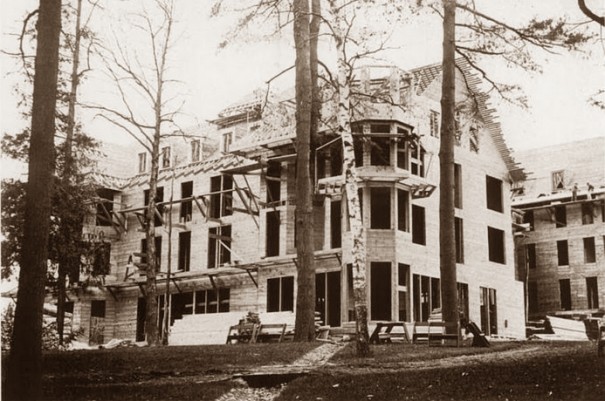
- The Sagamore II under construction in September 1893, courtesy Bolton Historical Society
It was a sad time, not only for Myron Brown and his fellow investors, but for entire Lake George community as a whole, but fortunately, the grieving period would be short lived. In the days and weeks that followed, Brown and the Green Island Improvement Company worked quickly to put plans together to rebuild. The Wilson Brothers architectural firm was again called upon to design the new structure, and by early August, just five weeks after the fire, construction was underway with a team of ninety men.
Differences between Sagamore I and Sagamore II (South Elevation)
To expedite construction, the new hotel was built on the foundation of its predecessor, meaning that the footprint of the building remained nearly identical, but there were changes to many of the exterior details. The most notable of which was that the hotel’s signature turret, which had originally been round, would now be octagonal, and the dormers and gables along the rooflines were redesigned (see above, images courtesy of the Adirondack Museum).
Amazingly, on June 26, 1894 – one day shy of exactly one year from when the original Sagamore had burned to the ground – the Sagamore II opened with well-received fanfare. As its predecessor had, the hotel again boasted of electric lighting throughout, but now there would be more guest rooms featuring en suite bathrooms and private balconies, as well as sophisticated furnishings, and additional amusements of golf, tennis, and horseback riding were offered for guests to take part in during their stay.
Interior Images of Sagamore II, circa 1894, courtesy Adirondack Museum
Myron Brown remained on as manager until 1905, when the hotel was leased to C. Allen Linsley, previously of the Hampton Terrace Hotel in North Augusta, South Carolina. Under Linsley, a new welcoming “bow” shaped porch with three floors of new rooms above it was added to the south elevation to formally greet guests arriving via steamboat (below).
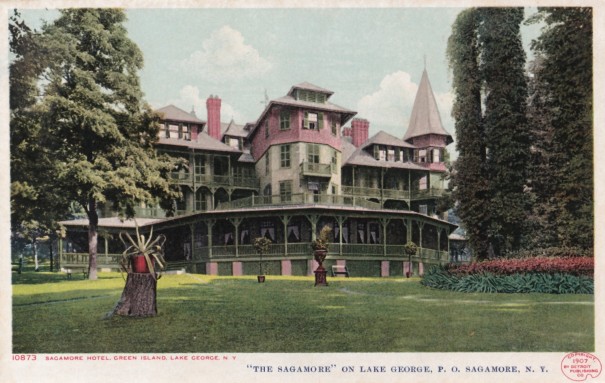
The Sagamore continued to prosper over the next decade, with occupancy consistently at or near capacity throughout the summer. But sadly in 1914, tragedy would once again strike. On April 12, seven weeks before the season’s official opening, the Sagamore II, and all of its contents, burned to the ground. The cause of the blaze was never officially determined, but due to the fact that it was the off-season and that there were relatively few people on the property at the time, arson was suspected.
Rumors swirled those next few years, and with outbreak of World War I, the prospects of building another grand hotel on Green Island were slow to materialize. But following the War, several ideas were proposed for the site, and in 1922 those plans finally turned into action…
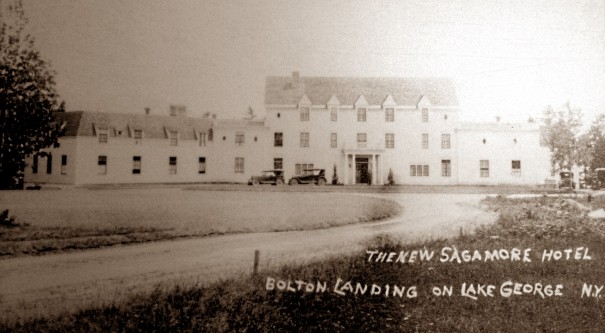
Approach to The Sagamore III, circa 1923, courtesy The Sagamore Resort
To continue the story, check out The Sagamore Hotel, Part II: The History Of The Iconic Resort On New York’s Lake George, where I’ll take you from the rebuilding of the Sagamore III in 1922 right up to the present day of this National Historic Registered hotel…
![]()
For more information about The Sagamore, or to book a stay at the hotel, please visit:![]()
www.TheSagamore.com
110 Sagamore Road
Bolton Landing, NY 12814
Hotel Direct: 518.644.9400
Reservations (Toll-Free): 866.384.1944
Group Sales: 855.700.OPAL

Special thanks to Jennifer Forte Cuomo, Kenzie Maloney, and Matthew Shelton at The Sagamore for their generous hospitality during my stay and for gifting me a copy of William Preston Gates’ wonderfully informative book History of The Sagamore Hotel, an indispensable resource for researching for this article.


